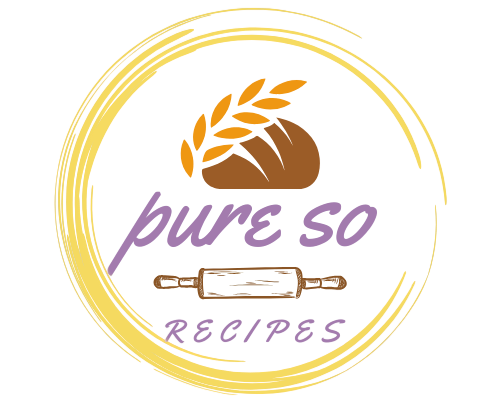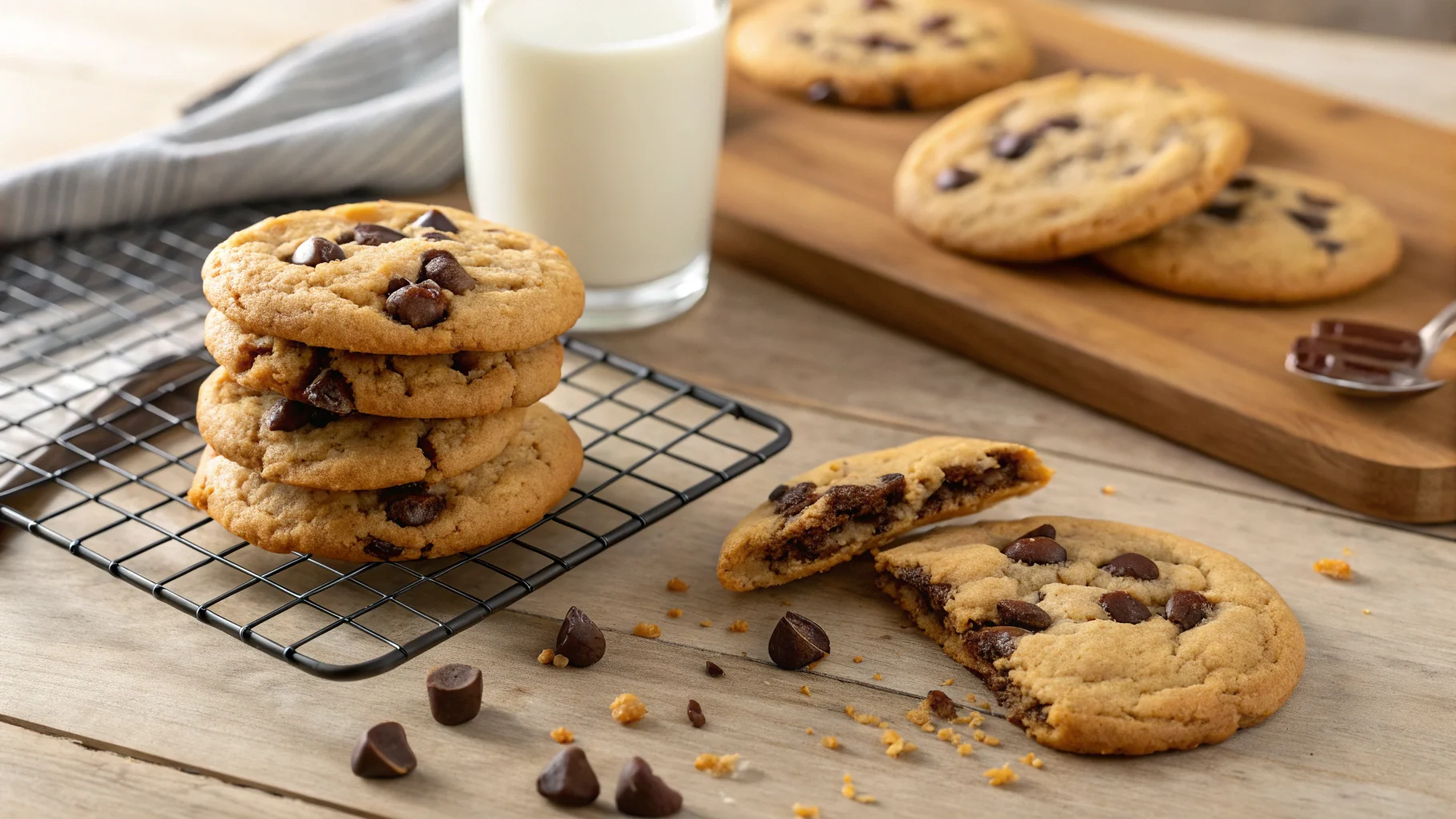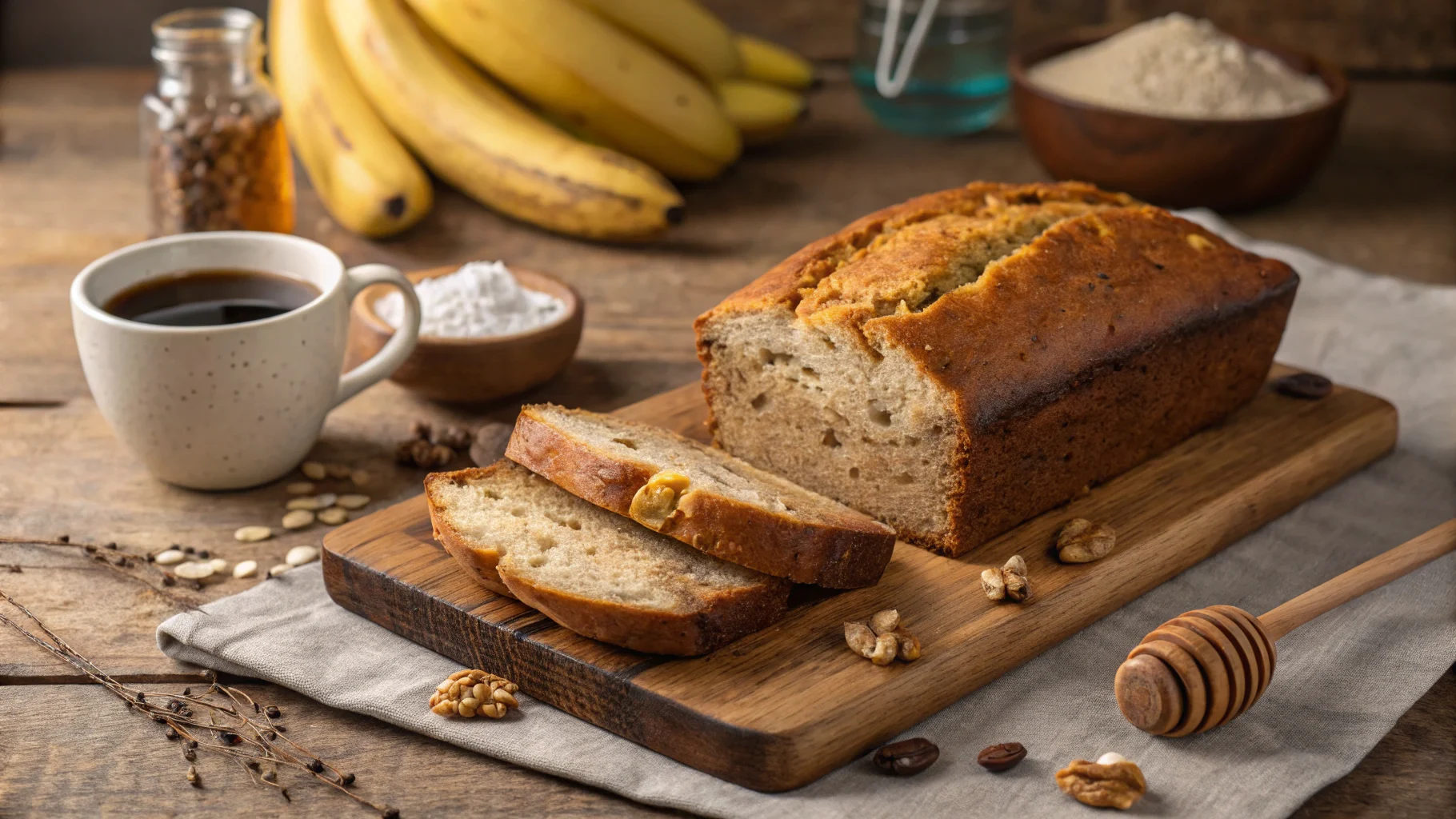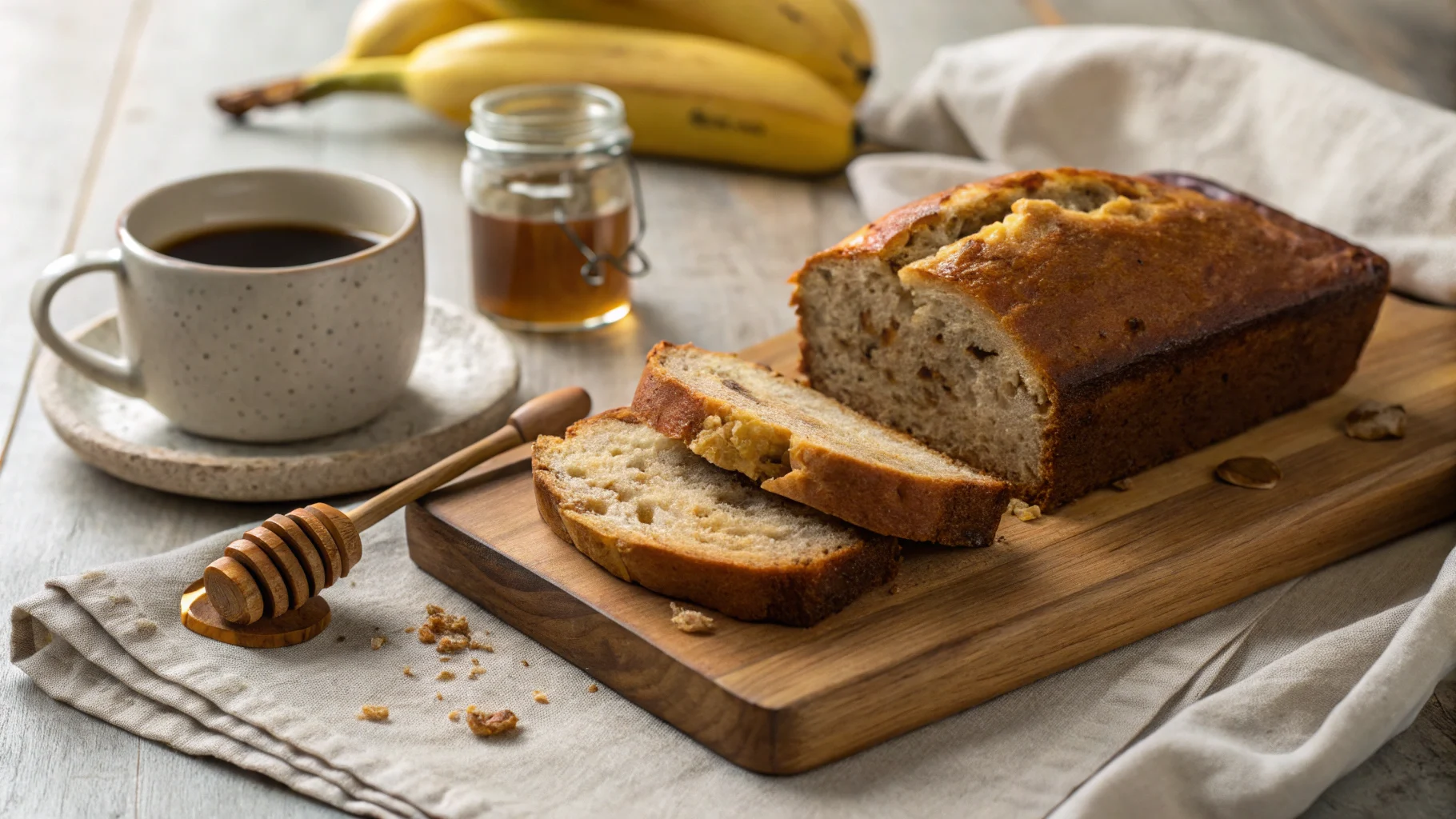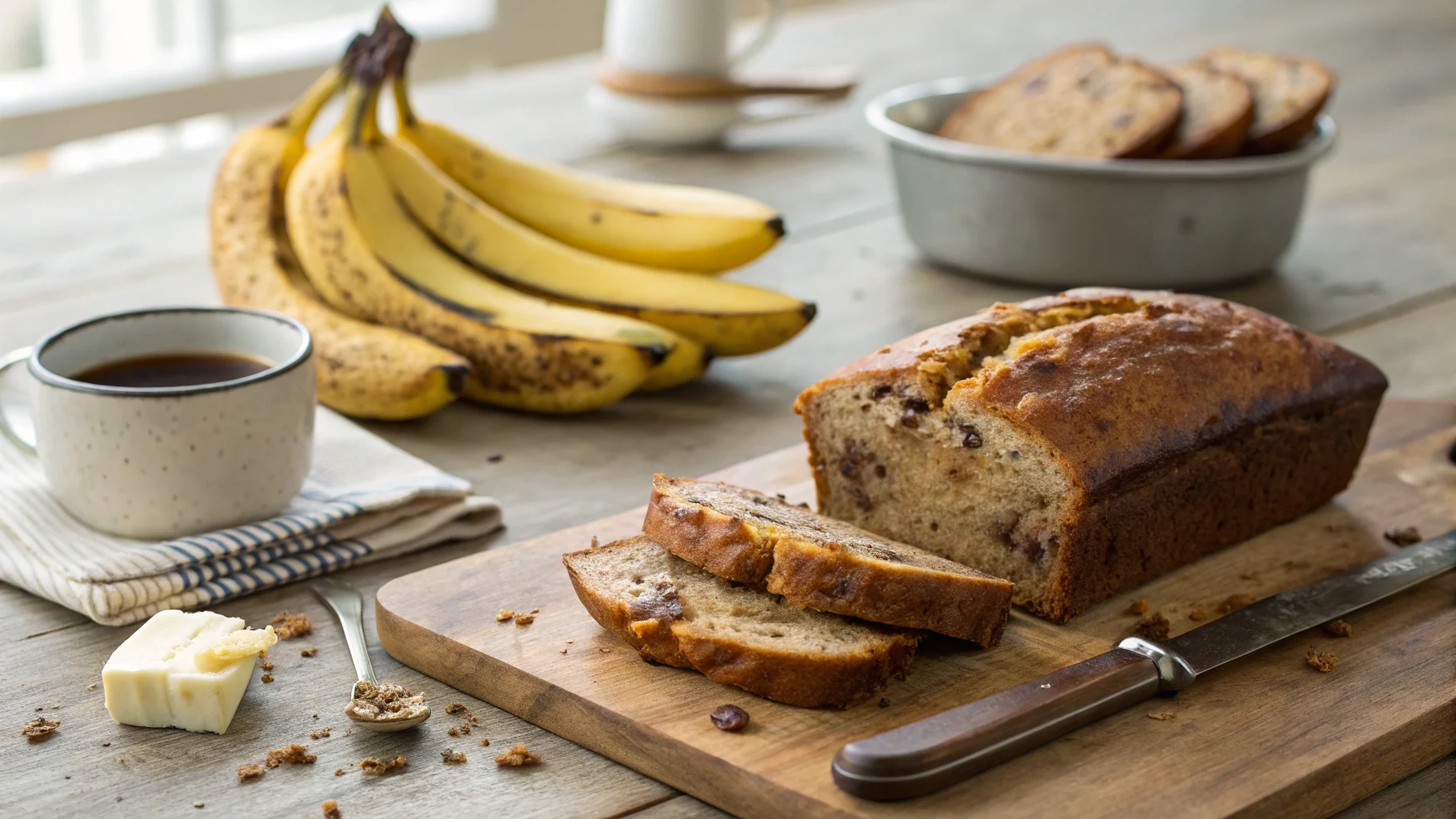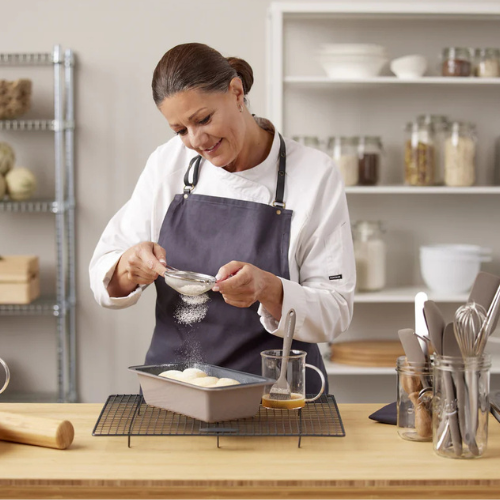The Allure of Take-Home Lab: Making Chocolate Chip Cookies
Chocolate chip cookies are more than just a dessert; they are a symbol of home, warmth, and nostalgia. From their crispy edges to their gooey centers, these cookies have been a favorite for generations. The combination of butter, sugar, and chocolate chips creates an irresistible flavor that appeals to all ages. Whether enjoyed with a glass of milk or fresh out of the oven, chocolate chip cookies hold a special place in American culture.
A Sweet History
The chocolate chip cookie originated in the 1930s when Ruth Wakefield, owner of the Toll House Inn, accidentally invented the recipe. She added chopped chocolate to her cookie dough, expecting it to melt, but instead, it held its shape. This happy accident led to the creation of the first batch of Toll House Chocolate Chip Cookies, and the rest is history. Today, the recipe has evolved with countless variations, but the love for these cookies remains unchanged.
Take-Home Lab: Making Chocolate Chip Cookies as a Learning Experience
Baking is both an art and a science. In this take-home lab, you will explore how different ingredients and techniques affect the final product. From understanding how leavening agents work to experimenting with different types of sugars, this hands-on experience will help you master the perfect chocolate chip cookie. By following the step-by-step process, you will see how small changes impact texture, flavor, and appearance.
This take-home lab is not just about making cookies; it’s about discovering the chemistry behind baking. Through trial and error, you can learn how ingredients interact, why chilling dough matters, and how baking temperatures affect the final outcome. Whether you’re a beginner or an experienced baker, this experiment will deepen your appreciation for the science behind chocolate chip cookies.
Next, let’s explore the essential ingredients that contribute to the perfect batch of cookies.
Table of contents
The Science Behind Take-Home Lab: Making Chocolate Chip Cookies
Baking is more than just following a recipe; it is a delicate balance of ingredients and techniques that determine the final texture and flavor. In this section, we will explore how different components impact the outcome of your take-home lab: making chocolate chip cookies. Understanding the science behind baking will help you make adjustments and achieve the perfect cookie every time.
The Role of Ingredients in Making Chocolate Chip Cookies
Each ingredient in a chocolate chip cookie serves a specific function. From fats to sugars to leavening agents, every component influences the cookie’s structure, taste, and texture. By understanding how these ingredients work together, you can experiment with variations to create your ideal cookie.
Fats in Take-Home Lab: Butter vs. Shortening for Chocolate Chip Cookies
Fats play a crucial role in the texture and richness of chocolate chip cookies. The two most commonly used fats in cookie recipes are butter and shortening, each contributing differently to the final product.
- Butter: Since butter contains about 16% water, it creates cookies with a richer flavor and crispier edges. The water in butter turns into steam during baking, causing cookies to spread more. If you prefer a chewy and slightly crispy cookie, butter is the best choice.
- Shortening: Unlike butter, shortening is 100% fat, which means it produces cookies that hold their shape better and have a softer, cake-like texture. Since shortening lacks water, it does not create as much steam, resulting in less spread.
For the best of both worlds, some recipes use a combination of butter and shortening to achieve both a tender texture and a rich, buttery taste.
Reference: “The Science of Cookies – A Fun Science Experiment” (Hessun Academy)
Sugars in Chocolate Chip Cookies: Brown Sugar vs. White Sugar
Sugar is more than just a sweetener; it affects the moisture content, texture, and caramelization of cookies. The ratio of brown sugar to white sugar determines whether your cookies turn out soft, chewy, or crispy.
- White Sugar: Granulated sugar creates cookies that spread more, resulting in a thinner, crispier texture. Since white sugar lacks molasses, it does not add extra moisture.
- Brown Sugar: The presence of molasses in brown sugar makes cookies softer and chewier. It also contributes to a deeper, caramel-like flavor. The extra moisture from molasses helps keep cookies tender for a longer period.
Adjusting the balance between white and brown sugar can fine-tune the final texture of your cookies. If you want chewier cookies, increase the brown sugar. For crispier cookies, use more white sugar.
Reference: “Granulated vs. Light Brown vs. Dark Brown Sugar: Which Is the Best for Chocolate Chip Cookies?” (AllRecipes)
Leavening Agents: Baking Soda and Baking Powder
Leavening agents determine how much your cookies rise and spread. The two main leavening agents used in take-home lab: making chocolate chip cookies are baking soda and baking powder. While they may seem similar, they serve different purposes.
- Baking Soda: Since baking soda is a base, it requires an acidic ingredient (such as brown sugar) to activate. It produces carbon dioxide gas, which helps cookies spread and develop a chewy texture.
- Baking Powder: Unlike baking soda, baking powder contains both an acid and a base, meaning it can activate without additional acidic ingredients. It creates a lighter, puffier cookie.
If you use too much baking soda, cookies may have a slightly bitter taste, while too much baking powder can lead to an overly cakey texture. Finding the right balance is key to getting the perfect cookie structure.
Reference: “Cookie Lab” (University of San Diego)
Mixing Methods and Their Effects
Beyond ingredients, the way you mix cookie dough significantly impacts the final result. The method you choose can alter texture, spread, and even flavor development.
Creaming vs. Melting Butter
The way butter is incorporated into cookie dough affects the final texture. There are two main methods: creaming and melting butter.
- Creaming Butter: The most common method involves beating butter and sugar together until light and fluffy. This process incorporates air, leading to cookies with a softer, thicker texture. The air pockets created during creaming expand during baking, giving cookies more structure.
- Melting Butter: Melted butter leads to chewy and denser cookies. Since melting eliminates air pockets, cookies do not rise as much and have a richer, more concentrated flavor. This method is often used in recipes that aim for chewy cookies, such as the famous New York-style cookies.
Understanding these methods allows you to adjust your technique based on whether you prefer soft and thick cookies or thin and chewy ones.
Reference: “Chewy Chocolate Chip Cookies” (Sally’s Baking Addiction)
Importance of Chilling Dough
Chilling cookie dough is one of the most effective ways to improve texture and flavor. Although it may seem like an unnecessary step, refrigeration has multiple benefits.
- Better Texture: Chilled dough spreads less during baking, resulting in thicker, chewier cookies.
- Enhanced Flavor: Refrigeration allows time for the ingredients to meld together, deepening the overall flavor. The longer the dough chills, the more pronounced the caramelized, toffee-like taste becomes.
- Controlled Spread: Since chilled dough is firmer, it does not spread as much when baked. This helps maintain a more uniform shape.
For the best results, chill the dough for at least 30 minutes, but ideally overnight. This simple step can elevate your take-home lab: making chocolate chip cookies to a whole new level.
Reference: “This Is the 1 Step You Should Never Skip When Baking Cookies” (Sally’s Baking Addiction)
Understanding the science behind fats, sugars, leavening agents, and mixing methods is essential for mastering chocolate chip cookies. Next, we will dive into a classic recipe and step-by-step instructions to help you put this knowledge into practice.
Classic Chocolate Chip Cookie Recipe
Now that you understand the science behind baking, it’s time to apply that knowledge in the kitchen. This take-home lab: making chocolate chip cookies will walk you through a foolproof recipe, ensuring you achieve the perfect balance of flavor and texture. Follow these steps closely, and don’t forget to experiment with variations to make the cookies uniquely yours.
Ingredients List
The right ingredients are key to baking delicious chocolate chip cookies. Using high-quality ingredients will enhance both texture and flavor. Below is a classic recipe with precise measurements.
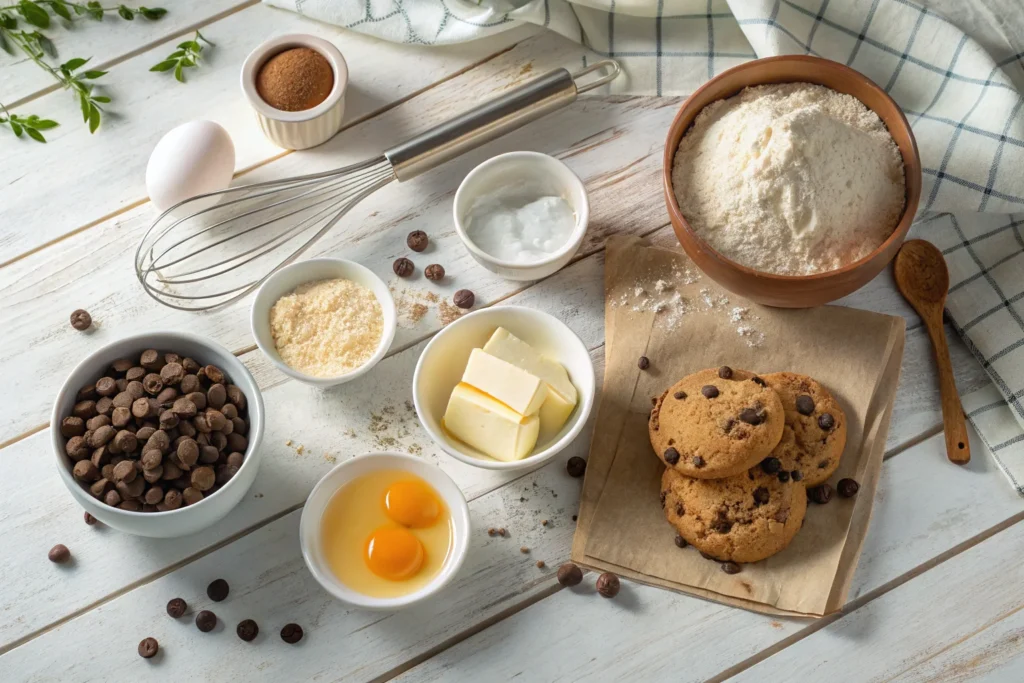
Basic Ingredients
- 2 ¼ cups all-purpose flour (provides structure)
- 1 teaspoon baking soda (helps cookies rise)
- ½ teaspoon salt (enhances flavor)
- 1 cup unsalted butter, softened (adds richness)
- ¾ cup granulated sugar (creates crisp edges)
- ¾ cup brown sugar, packed (adds moisture and chewiness)
- 2 teaspoons vanilla extract (enhances sweetness)
- 2 large eggs (binds ingredients and adds moisture)
- 2 cups semi-sweet chocolate chips (melts into gooey bites)
Optional Add-Ins
- 1 cup chopped nuts (for extra crunch)
- 1 teaspoon espresso powder (deepens the chocolate flavor)
- 1 cup white chocolate chips (for a sweeter twist)
Reference: “Best Chocolate Chip Cookies” (AllRecipes)
Step-by-Step Instructions
Baking requires precision, but it doesn’t have to be complicated. Follow these step-by-step instructions to get the best results in your take-home lab: making chocolate chip cookies.
Preparing the Dough
- Mix dry ingredients: In a medium bowl, whisk together the flour, baking soda, and salt. Set this aside.
- Cream butter and sugars: In a large mixing bowl, beat the butter, granulated sugar, and brown sugar together until light and fluffy. This step is essential because it creates air pockets that help with texture.
- Add eggs and vanilla: Mix in the eggs, one at a time, ensuring each is fully incorporated. Then, add the vanilla extract for extra flavor.
- Combine wet and dry ingredients: Slowly mix in the flour mixture, stirring just until combined. Overmixing can make the cookies tough.
- Fold in chocolate chips: Gently stir in the chocolate chips (and any optional add-ins). Make sure they are evenly distributed.
- Chill the dough (optional but recommended): For thicker cookies, refrigerate the dough for at least 30 minutes. This helps control spread during baking.
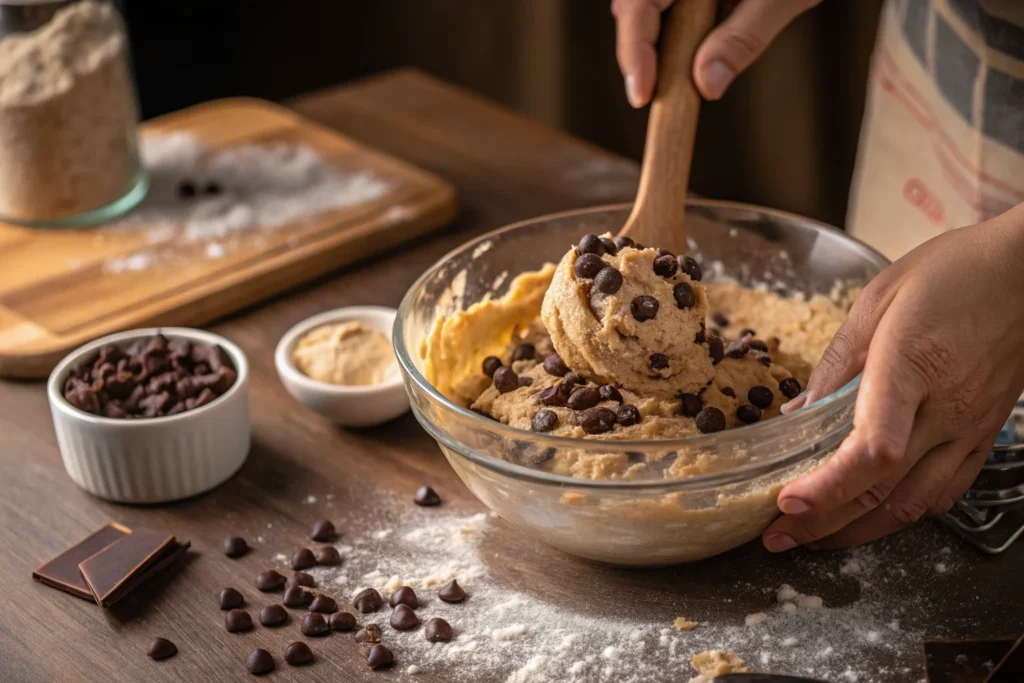
Baking the Cookies
- Preheat the oven: Set the oven to 350°F (175°C). Make sure it is fully preheated before baking.
- Prepare the baking sheets: Line cookie sheets with parchment paper to prevent sticking.
- Scoop the dough: Use a cookie scoop or spoon to drop rounded tablespoons of dough onto the prepared sheets. Space them about 2 inches apart to allow for spreading.
- Bake: Place the cookies in the oven and bake for 9-12 minutes or until the edges are golden brown. The centers may still look slightly underdone, but they will continue to set after baking.
- Check for doneness: If you prefer softer cookies, remove them at the 9-minute mark. For crispier cookies, let them bake a minute or two longer.
Cooling and Storing
- Let cookies set: After removing the cookies from the oven, let them rest on the baking sheet for 5 minutes before transferring them to a cooling rack. This step allows the cookies to firm up without overbaking.
- Cool completely: Place cookies on a wire rack and allow them to cool completely before storing. This prevents condensation, which can make them soggy.
- Store properly:
- Keep cookies in an airtight container at room temperature for up to 5 days.
- For longer storage, freeze baked cookies in a sealed container for up to 3 months.
- You can also freeze unbaked cookie dough balls and bake them fresh whenever you want.
Following these steps ensures that your take-home lab: making chocolate chip cookies turns out perfectly every time. Next, we will explore fun variations to customize your cookies!
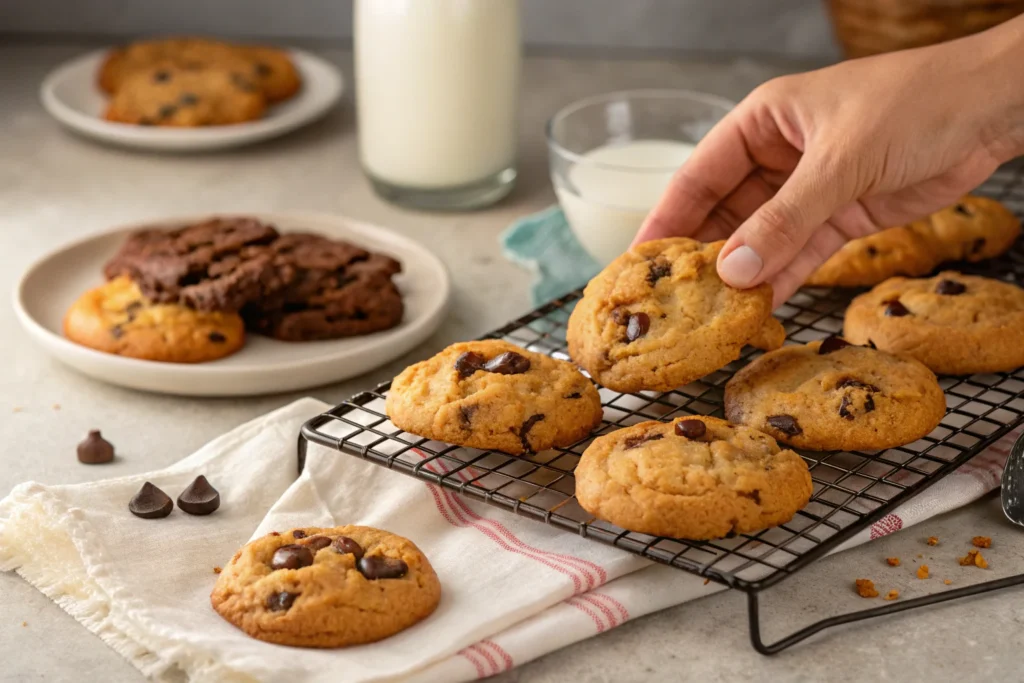
Experimenting with Variations
Baking is all about creativity, and take-home lab: making chocolate chip cookies is the perfect opportunity to experiment with different textures and flavors. Whether you prefer your cookies chewy, crispy, or with a unique twist, small adjustments in ingredients and techniques can make a big difference.
Texture Modifications
The texture of chocolate chip cookies is influenced by factors like ingredient ratios, baking temperature, and mixing methods. By making simple changes, you can achieve your ideal cookie consistency.
Achieving Chewy Cookies
If you love soft, chewy cookies, the key is moisture retention. Several factors contribute to chewiness, including the type of sugar, fat content, and baking method.
- Use more brown sugar than white sugar. The molasses in brown sugar attracts moisture, keeping cookies softer for longer.
- Melt the butter instead of creaming it. This leads to denser, chewier cookies since melted butter creates a more compact dough.
- Add an extra egg yolk. Egg yolks contribute fat and help create a rich, chewy texture.
- Increase moisture-retaining ingredients. A tablespoon of corn syrup or honey can help keep cookies softer.
- Reduce baking time slightly. Remove cookies from the oven when the centers still look underbaked. They will continue to set as they cool.
Creating Crispy Cookies
For those who prefer a crispy texture, increasing dryness and maximizing spread are key. A few strategic modifications can result in crunchy, golden-brown cookies.
- Use more white sugar than brown sugar. Granulated sugar absorbs less moisture, leading to a drier and crispier texture.
- Swap butter for shortening. Since shortening lacks water content, it prevents steam from forming, creating a crisper cookie.
- Flatten the dough before baking. Pressing the dough slightly before baking encourages more even spread.
- Bake at a lower temperature for longer. A slower bake at 325°F instead of 350°F allows the cookies to dry out without burning.
- Add a little extra fat. A tablespoon of vegetable oil can encourage a thinner, crunchier cookie.
Reference: “Crispy Chocolate Chip Cookies” (Sally’s Baking Addiction)
Flavor Enhancements
While chocolate chip cookies are already packed with flavor, adding extra ingredients can take them to the next level. Experimenting with mix-ins and alternative flours is a great way to customize your recipe.
Adding Nuts and Dried Fruits
If you want to add more texture and depth of flavor to your take-home lab: making chocolate chip cookies, nuts and dried fruits are excellent choices. They provide a balance of crunch and chewiness while complementing the sweetness of the chocolate.
- Best Nuts for Cookies:
- Walnuts – Classic choice with a slightly bitter contrast to sweet dough.
- Pecans – Buttery and soft, perfect for a rich cookie.
- Almonds – Adds a light crunch without overpowering the chocolate flavor.
- Macadamia nuts – Creamy and slightly sweet, great with white chocolate chips.
- Best Dried Fruits for Cookies:
- Dried cranberries – Adds a tart contrast to the sweetness of the chocolate.
- Raisins – Naturally sweet and chewy, pairs well with brown sugar.
- Chopped dates – Provides caramel-like sweetness.
- Dried cherries – A sophisticated choice with a slightly tangy kick.
When adding mix-ins, be sure to chop larger pieces into smaller bits to ensure even distribution. A good ratio is ½ to 1 cup of mix-ins per batch.
Exploring Alternative Flours
For those with dietary restrictions or looking to experiment with healthier options, alternative flours can replace traditional all-purpose flour while still delivering delicious results.
- Whole Wheat Flour:
- Adds a slightly nutty flavor and extra fiber.
- Makes cookies denser and chewier, so reduce by 25% and mix with all-purpose flour for better texture.
- Gluten-Free Flour Blends:
- Many store-bought blends work as a 1:1 substitute for all-purpose flour.
- Adding ½ teaspoon of xanthan gum can improve structure and chewiness.
- Almond Flour:
- Produces softer cookies with a slight chew.
- Since it lacks gluten, it may require an extra egg for binding.
- Oat Flour:
- Enhances chewiness and adds a subtle oat flavor.
- Absorbs more liquid, so use slightly less flour or increase moisture content.
Experimenting with different flours allows you to customize the texture and nutritional profile of your cookies while maintaining the delicious flavor of take-home lab: making chocolate chip cookies.
By adjusting ingredients and techniques, you can create cookies that match your exact preference. Whether you love them soft and chewy or thin and crispy, these modifications will help you achieve your ideal cookie. Next, we will answer some common questions about baking and storing chocolate chip cookies.
Frequently Asked Questions (FAQs)
Baking cookies can sometimes raise unexpected questions, especially when experimenting in a take-home lab: making chocolate chip cookies. Below are answers to some of the most common questions about baking, storing, and enjoying homemade chocolate chip cookies.
How long will homemade chocolate chip cookies last?
The shelf life of homemade chocolate chip cookies depends on how they are stored.
- At room temperature, cookies remain fresh for 5-7 days when kept in an airtight container.
- If refrigerated, cookies can last up to two weeks, but they may lose some softness.
- For long-term storage, freeze cookies for up to three months in a sealed container. Simply let them thaw at room temperature or warm them in the oven at 300°F for 5 minutes before serving.
To maintain softness, place a slice of bread in the container. The cookies will absorb moisture from the bread, preventing them from drying out.
How much is one chocolate chip cookie worth?
The cost of a single chocolate chip cookie varies based on factors such as ingredient quality, size, and location.
- Homemade cookies typically cost between $0.25 and $0.75 per cookie, depending on the ingredients used. High-quality butter and organic chocolate chips may increase costs.
- Bakery cookies usually range from $1.50 to $3.00 per cookie, especially if they are gourmet or oversized.
- Pre-packaged store-bought cookies can cost as little as $0.50 per cookie, but they often contain preservatives to extend shelf life.
While store-bought options are convenient, many people find that homemade cookies offer better flavor and a fresher texture.
Are homemade chocolate chip cookies better than store-bought?
The debate between homemade and store-bought cookies comes down to freshness, quality, and personal preference.
- Homemade cookies allow full control over ingredients, letting you adjust sugar levels, use real butter, or incorporate add-ins like nuts or sea salt.
- Store-bought cookies provide convenience and consistency but often contain preservatives and artificial flavors.
- Many find that homemade cookies have a superior texture since they can be eaten warm and fresh from the oven.
If time is a concern, homemade cookie dough can be prepped in advance and frozen, allowing for fresh-baked cookies whenever you want.
What are the 7 steps in making cookies?
Baking chocolate chip cookies follows a straightforward process that ensures consistency and delicious results.
- Gather ingredients. Ensure all flour, sugar, butter, eggs, and chocolate chips are measured before starting.
- Preheat the oven. Set it to 350°F (175°C) to ensure even baking.
- Mix dry and wet ingredients separately. Whisk together flour, baking soda, and salt in one bowl while creaming butter, sugars, and eggs in another.
- Combine wet and dry mixtures. Gradually mix them together until just combined. Overmixing can lead to tough cookies.
- Fold in add-ins. Stir in chocolate chips, nuts, or dried fruits to customize the flavor.
- Portion and place dough on baking sheet. Use a spoon or cookie scoop to ensure even sizes.
- Bake and cool. Bake for 9-12 minutes, then let cookies cool on a wire rack before enjoying.
By following these steps, you can create perfect homemade chocolate chip cookies every time.
Embracing the Baking Journey
Baking is not just about following a recipe; it is an opportunity to explore creativity, experiment with ingredients, and learn about the science of baking. Through this take-home lab: making chocolate chip cookies, you have discovered how fats, sugars, and mixing methods influence the final product.
Every baker has their own preferences—some love soft, chewy cookies, while others prefer a crisp bite. The beauty of homemade baking is that you can adjust each element to match your taste. Whether you enjoy classic cookies or want to experiment with alternative flours, nuts, or spices, the possibilities are endless.
As you continue your baking journey, remember that small adjustments can lead to big differences. Keep experimenting, take notes, and most importantly, enjoy the process. Because at the end of the day, nothing beats the taste of a warm, freshly baked chocolate chip cookie.
